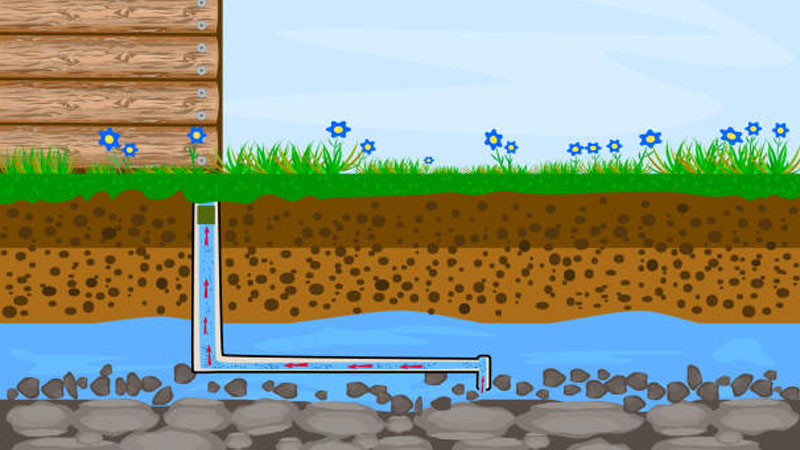
Groundwater is vital to human welfare and development, and in many countries it is the principal source of water for drinking, irrigation and industry. As a core component of the hydrological cycle, groundwater is also critical to sustaining many aquatic and terrestrial ecosystems. Globally, groundwater resources are under increasing pressure due to overexploitation, pollution and climate change. Our response to this pressure is often not adequate as we still lack sufficient knowledge about these invisible resources.
In many countries, groundwater is the principal source of one or more of water requirements for drinking, irrigation, and industry; and notwithstanding the problems described later, it remains the inherently safest source of major water supplies.
From an urban perspective, “making the invisible, visible” essentially involves having an improved understanding of this “hidden” resource, and mainstreaming it within the overall water management strategy of the city in a sustainable manner. All Indian cities need to map their groundwater resources to develop credible knowledge about the quantity and quality of the available resource. Given that most of our urban areas rely heavily on groundwater, having a robust database of this resource is the key to informing sustainable strategies to reduce the demand-supply gap.
The National Project on Aquifer Management (NAQUIM) initiated by Central Ground Water Board (CGWB) has created an enabling environment with the reforms proposed in the Atal Mission for Rejuvenation and Urban Transformation (AMRUT 2.0) by the ministry of housing and urban affairs. It is now up to the cities to leverage these.
It is very often that most Indian cities extract way more groundwater than can be replenished naturally. This is the primary reason why cities like Delhi, Bengaluru, Chennai and Hyderabad have seen a rapid depletion in their groundwater levels. Researchers coined the term “sustainable yield” of groundwater to address such challenges in the late 1990s. This is defined as the amount of groundwater extraction that can be maintained indefinitely without causing unacceptable environmental, economic, and social consequences.
This concept has already been adopted for groundwater management by several countries across the globe. For example, as early as 1999, the US Geological Survey issued comprehensive national guidelines to ensure the sustainability of groundwater resources in the United States (US). Incidentally, similar to India, groundwater is the source for approximately 51% of the drinking water supply in urban areas in the US. The sustainable yield of groundwater depends upon a number of site-specific factors; therefore, it is vital for our cities to have a contextualised understanding of this parameter to avoid irreversible damage.
The primary concern over the chemistry of groundwater is its fitness for different purposes, such as drinking, irrigation, and various industrial purposes. This information is usually expressed in legally binding national standards and advisory guidelines produced by international organizations.
Most countries have published drinking water quality standards, many of which were based on the World Health Organization (WHO) guidelines at the time the standards were enacted. If legal standards do not exist, the WHO guidelines are generally adopted as a de facto standard. However, it should be noted that the WHO periodically updates its guidelines in light of new information concerning health effects, practical detection limits, and treatability, but national standards are not automatically brought into line. In practice, in addition to regulating water supply, drinking water standards often become de facto standards for judging pollution of water bodies.
To comply with standards, in many countries it is customary to routinely test treated water as well as raw water before treatment. Such raw water testing is more frequent for surface water bodies as their quality can change more quickly, such that intakes may have to be closed at short notice to protect the public and/or the treatment works. Similarly, pollution events can pass quickly once the source of contamination is removed, so treatment works are rarely closed for extended periods. Groundwater presents a contrasting situation. Pollutant loads take a long time to accumulate but, once there, take much longer to remove.
As with any management strategy involving natural resources, citizen engagement is vital for success. It becomes even more crucial for groundwater because the “invisible” nature of the resource makes it easy for people to get away with indiscretions. A city may impose all the required regulations to control the extraction of groundwater and incentivise the rejuvenation of depleted groundwater resources; however, monitoring this is a herculean task. With the advent of technology, it is possible to have boreholes as small as four inches in diameter dug as deep as two hundred feet. Even if only 25% of the households in the city have such boreholes, it is still a monitoring nightmare for any city administration. Likewise, households may install a rainwater harvesting unit to avail the incentives provided to do so, or to abide by the mandatory regulations imposed in that regard. But it is challenging for city authorities to ascertain whether these units remain functional year after year.
As the climate crisis concerns escalate, its impacts are causing significant changes in the flow of rivers, and in some cases, a shift in their course. There are, therefore, credible concerns about the access and availability of surface water to meet future water demands of cities. The good news is, unlike some natural resources such as minerals or oil, groundwater is renewable. If managed sustainably, it can continue to serve as a reliable source of water supply for our cities in the future.